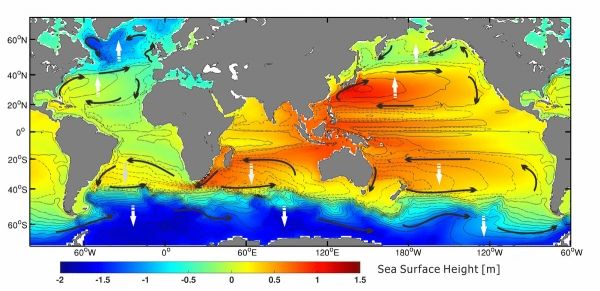In the course of the past 40 years, the major wind-driven current systems in the ocean have steadily shifted toward the poles. Experts at the Alfred Wegener Institute, Helmholtz Centre for Polar and Marine Research (AWI), came to this conclusion after analysing long-term global satellite data on the ocean surface temperature and sea level height. Both datasets offer insights into the evolution of large-scale surface currents, and indicate that, in the Northern and Southern Hemisphere alike, the borders of the ocean gyres and their boundary currents are moving closer to the poles, at a rate of over 800 metres per year. This displacement of tremendous water masses is chiefly driven by global warming, as e.g. calculations using a new AWI climate model confirm. According to the AWI researchers, the consequences of this change can already be felt by human beings and the environment alike: in affected regions, the sea level is rising, indigenous species are migrating, and storms are now following new courses. The study was released today in the journal Geophysical Research Letters.
In our planet’s major wind-driven ocean currents, the water essentially moves around in a circle. There are eight such massive currents, technically referred to as ocean gyres – three in the Atlantic, three in the Pacific, and one each in the Indian and Antarctic Oceans. These rotating current systems largely determine the weather and marine productivity in our planet’s coastal regions. For example, at their western edge (e.g. the Gulf Stream), the five subtropical ocean gyres transport warmth and moisture from the tropics to the middle and higher latitudes, which in turn influences local air temperatures and precipitation. In contrast, at their eastern edge (e.g. the Canary Current), a phenomenon known as upwelling pushes nutrient-rich water up to the surface. This water is so teeming with algae, microorganisms and fish that the upwelling areas are also known as the “pantries” of the ocean.
Continue reading at Alfred Wegener Institute
Image via Alfred Wegener Institute


